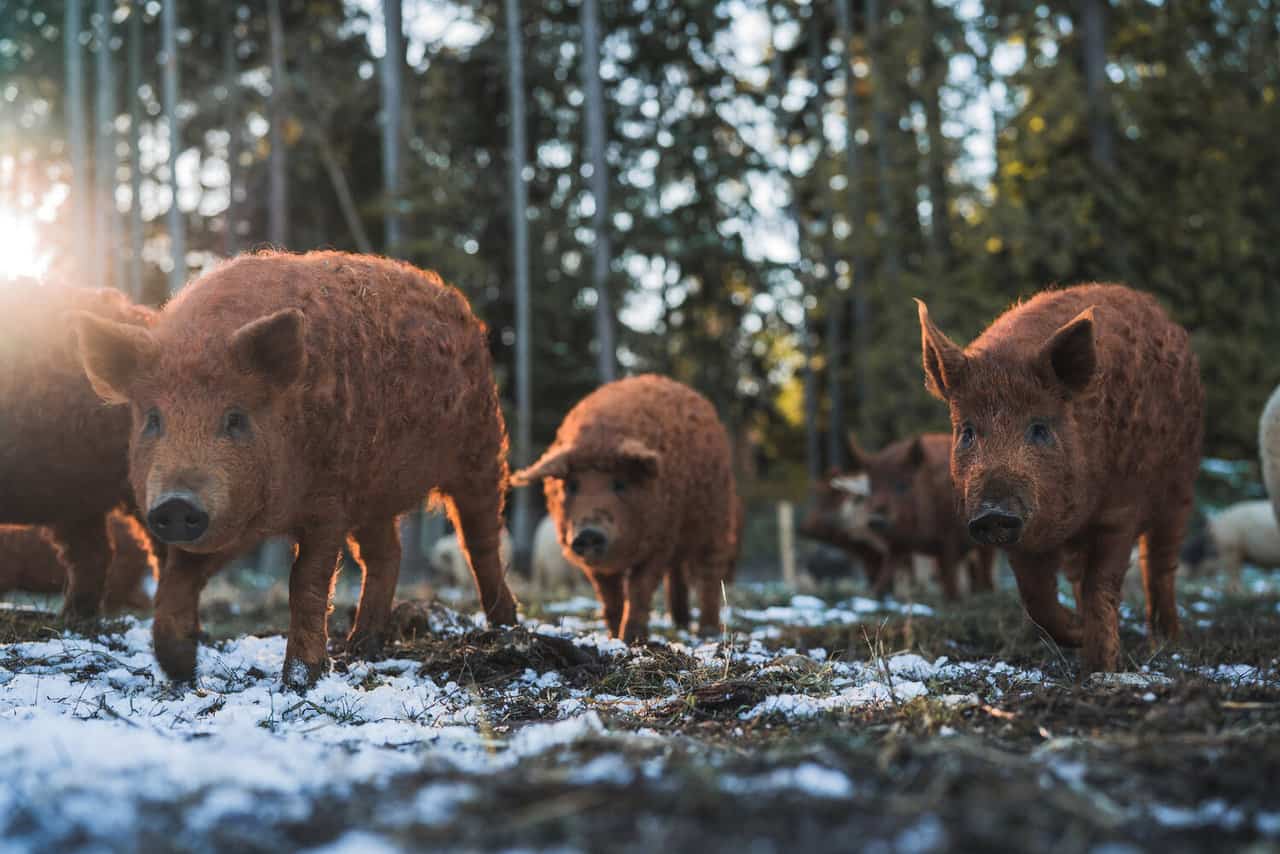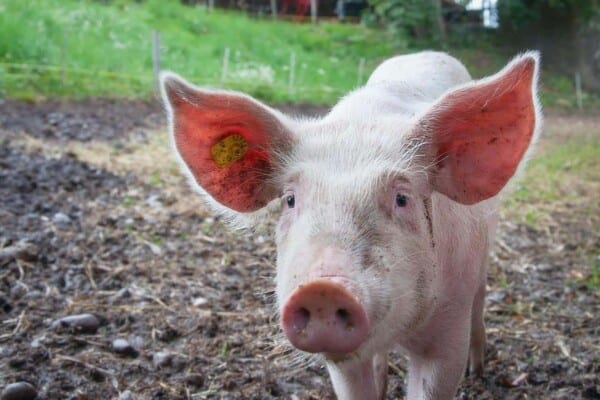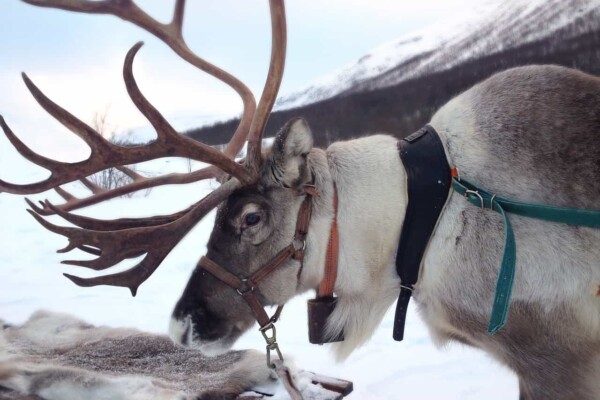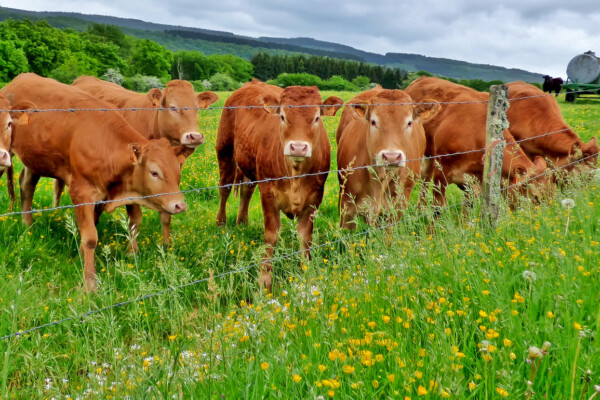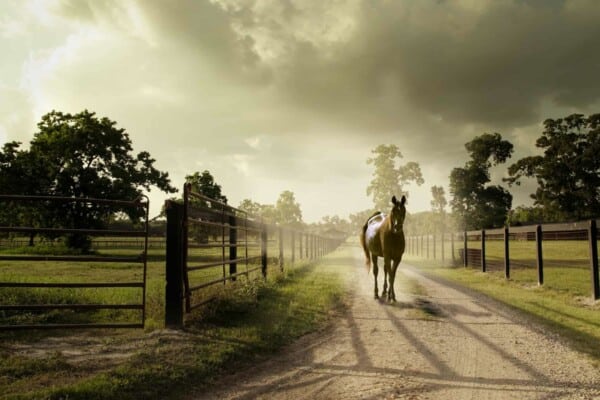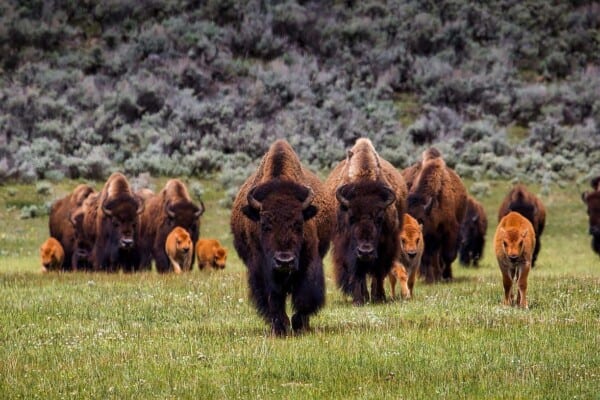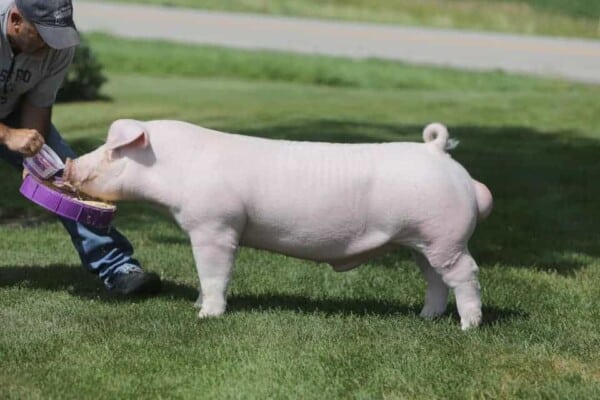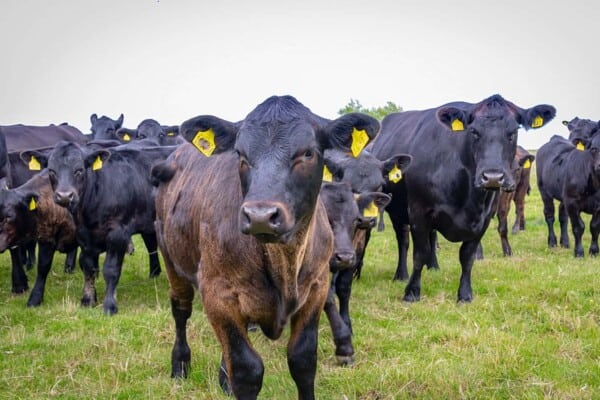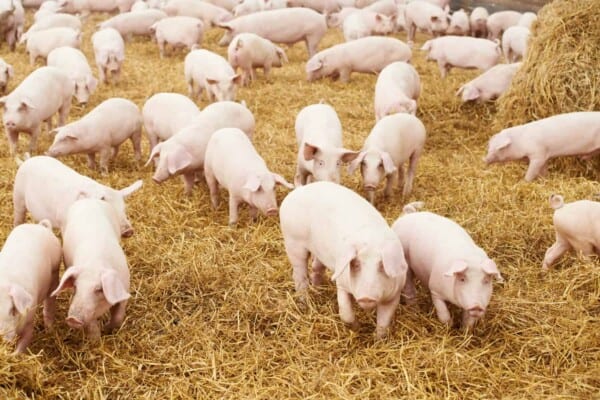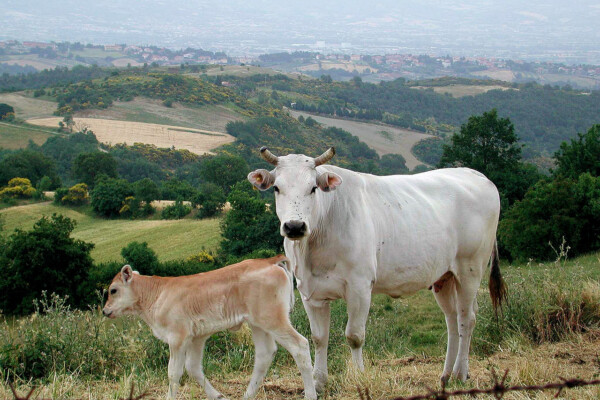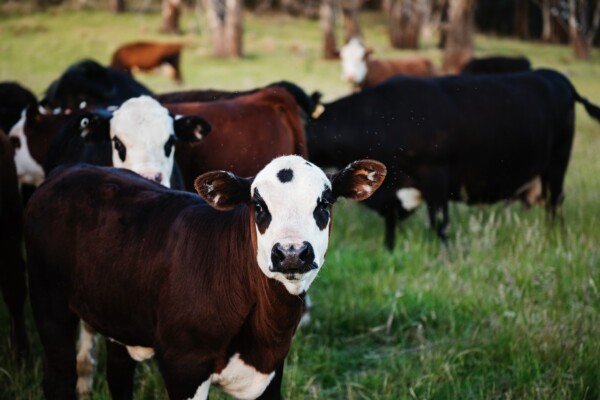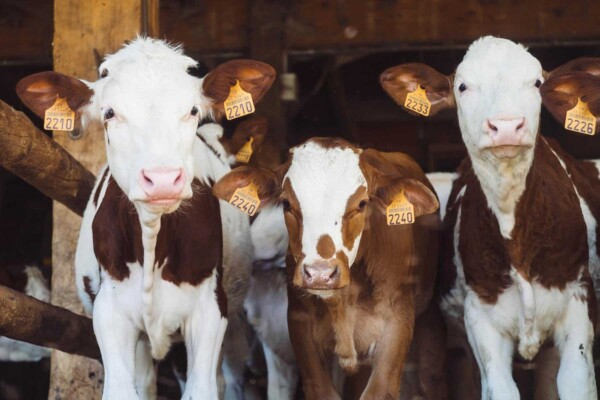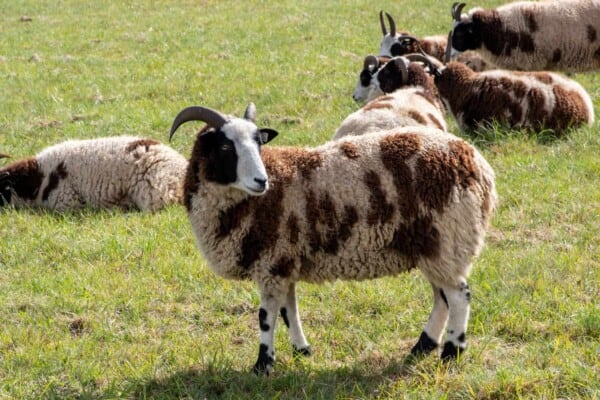When it comes to meat, there are plenty of alternatives to choose from on the market. Whether we’re talking about beef, pork or chicken, you have an onslaught of options to pick from when going to any restaurant around the world.
The fact of the matter is that although we all have different preferences when it comes to taste and quality, for the most part very few of these meats are actually all that different from one another.
Sure, you can categorize them by the animal itself, seeing as how lamb meat will always taste different from chicken meat. But different breeds of the same animal very rarely have a different taste and that’s a fact.
There are some exceptions, such as the famous Kobe Beef, which is a specific brand of Wagyu beef. This is a special type of meat that comes specifically from Japanese black cattle, and according to anyone that has ever tasted it, it really deserves to be one of the most expensive meats on the market for its taste alone.
But there are very few other meats out there that stand out like this one from the crowd and today we’re here to present you one alternative to the “classic” pork meat that will leave you speechless. This meat comes from a certain hog that’s called Mangalitsa or Mangalica, and it has quite an interesting history to behold.
So, pick up your fine dine cutlery and sit back as we bring you forth what may very well be the most detailed guide to the Mangalitsa pigs on the internet. Let’s start off with the basics:
From Nearly Zero to Hero
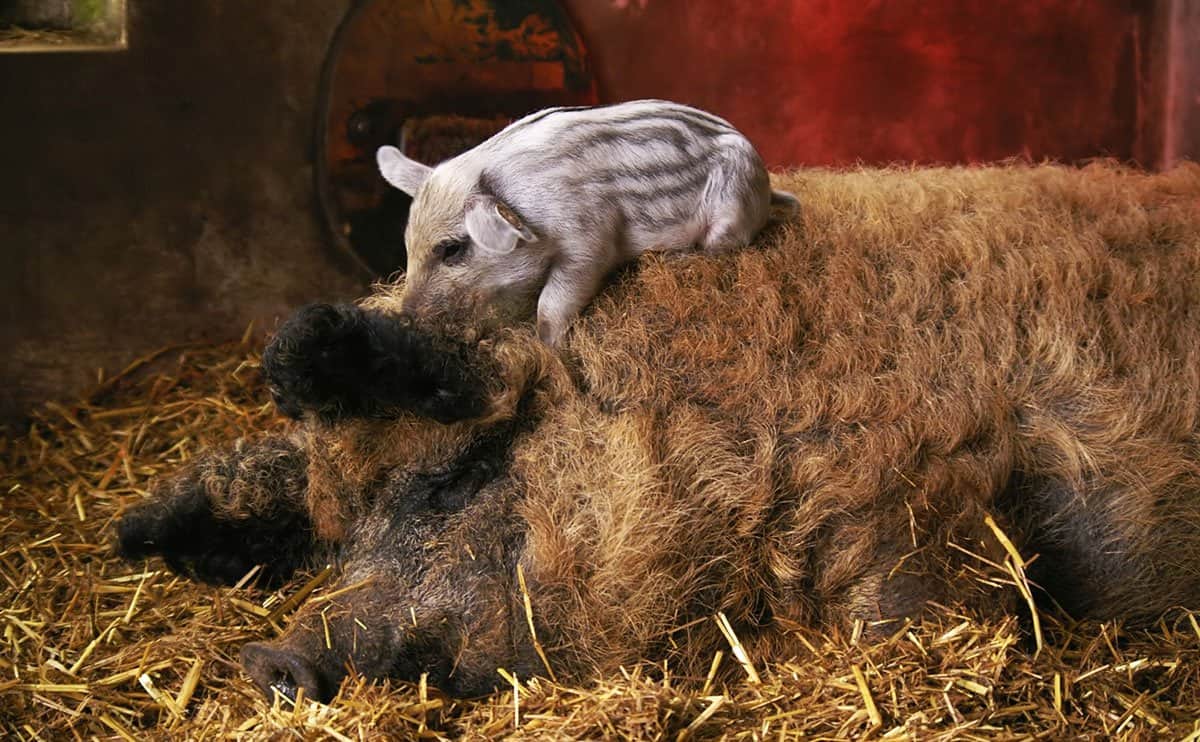
Whenever you think of an initiative that goes by “Eat them to save them” you don’t exactly picture a group of animal rights activists, don’t you? Well, the truth is that we live in a society in which if there is no purpose for you to live, you won’t get to live, period.
This is exactly what happened to the Mangalitsa pigs during the mid-50s as they were almost driven to extinction simply because people stopped eating them.
So, what exactly happened you may ask? Well, it all stems from the fact that before the 50s rolled in, the Mangalitsa pigs were actually quite popular with both the everyday man and woman and the rich members of our society.
Everyone loved eating meat from Mangalitsa pigs because they were quite literally the most delicious alternative on the market. So as everyone continued sipping on their coffee while eating their favorite fatty food, something happened, something that almost drove the species to extinction.
All of a sudden, people were super against fatty foods, to the point where they even started advertising all over the TV how saturated fats could easily lead to an early grave. They essentially stated live on camera that eating saturated fats will take away many years of your life, so people reacted the way you think they would, they abandoned all products containing saturated fats.
This included lubricants, candles, soaps and even cosmetics, but no avenue took as big of a fall as the pork industry, specifically the Mangalitsa pig market.
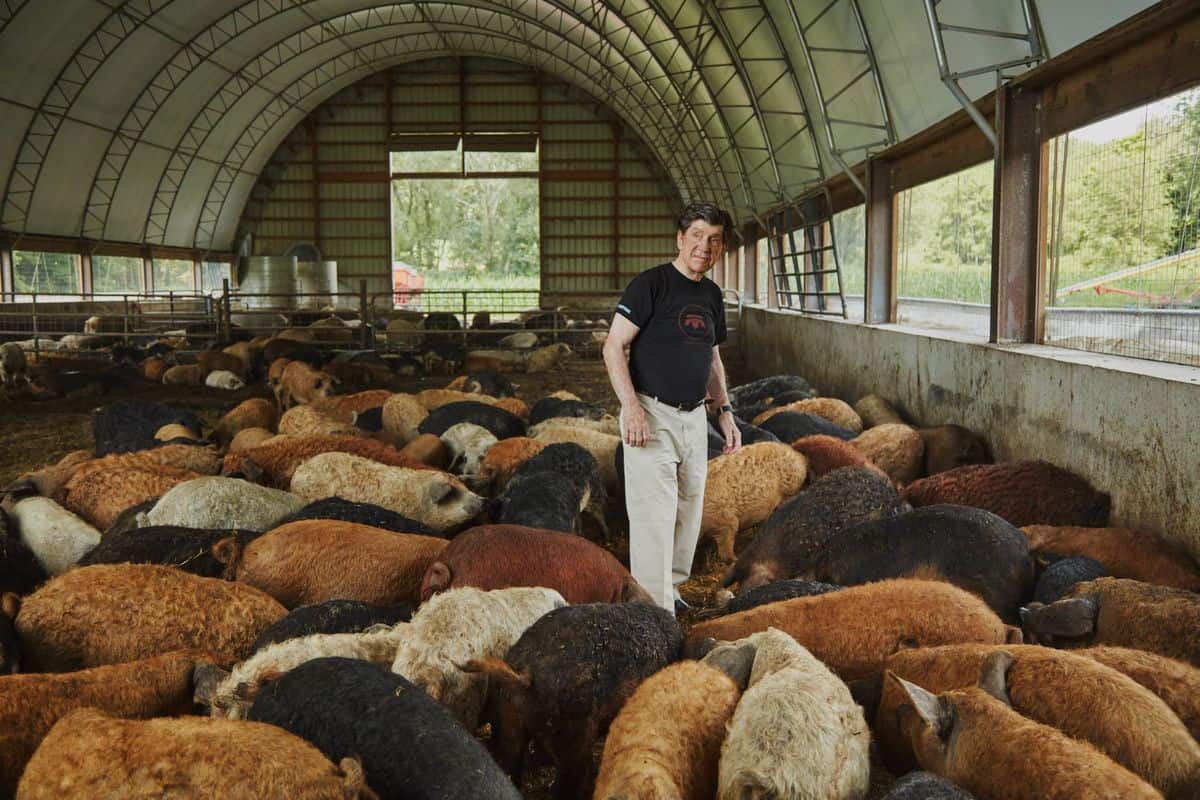
In case you didn’t know this yet, what really helped the Mangalitsa pigs stand out taste wise was the fact that they were almost entirely made up of lard, which is very similar to fats. They have around 60 to 70 percent lard in their bodies, which is why it tastes so good when cooked properly.
But this almost became their downfall as most people began avoiding it like the plague, despite the fact that lard itself contains less saturated fat and more unsaturated fat than even butter does. Still, this didn’t stop the people from consuming their buttered-up food every day, but it sure did stop them from eating any Mangalitsa pigs.
Despite the fact that this was the catalyst of the downfall, it wasn’t the only reason as to why people stopped breeding them. Another interesting reason here is the fact that Mangalitsa pigs actually do require a lot more space to move around in and on top of that they also have a lot less offspring too.
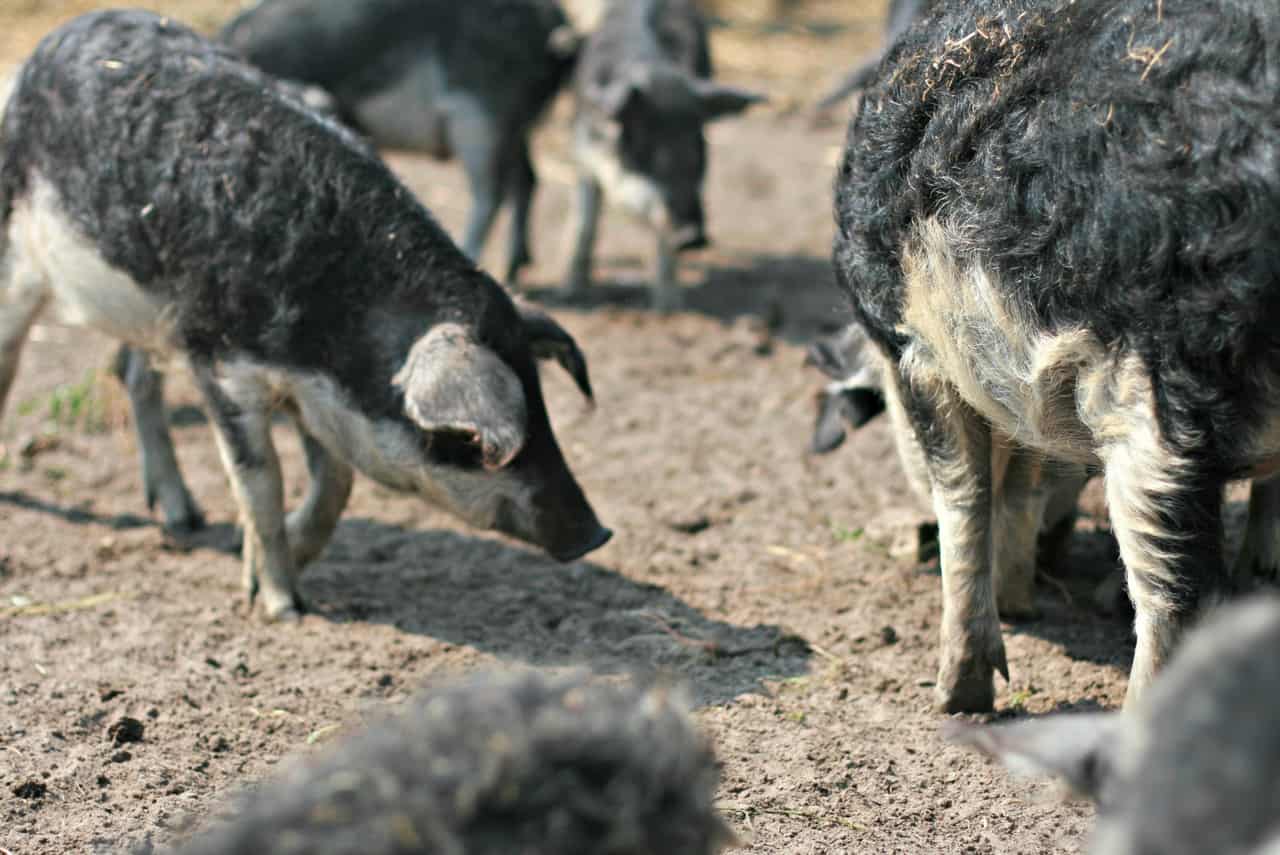
This all made it extremely unprofitable to continue breeding them, to the point where nobody actually wanted to have any Mangalitsa pigs in their farm anymore. The new alternative was the everyday pigs that we see today, the ones that we have continued using for their meat for well over seven decades now.
This might not seem like all that much trouble at first, it’s just that people didn’t want to eat them all that much anymore, big deal, right? Well, as it turns out, the less likely you are to want something, the less of that thing will be produced by the people distributing them in the first place.
This is exactly why stuff like soda is so cheap, it’s because there is a lot of demand for it so they can mass produce it to oblivion and beyond, decreasing the price because they know they can always make their money back on the market.
Well, now that there was a lot less of a demand for the Mangalitsa pigs, to the point where people actually started avoiding their meat altogether, it became increasingly tough to breed them, and meaningless at that too because they would bring in a lot less money for a lot more effort.
So, what happened? What changed?
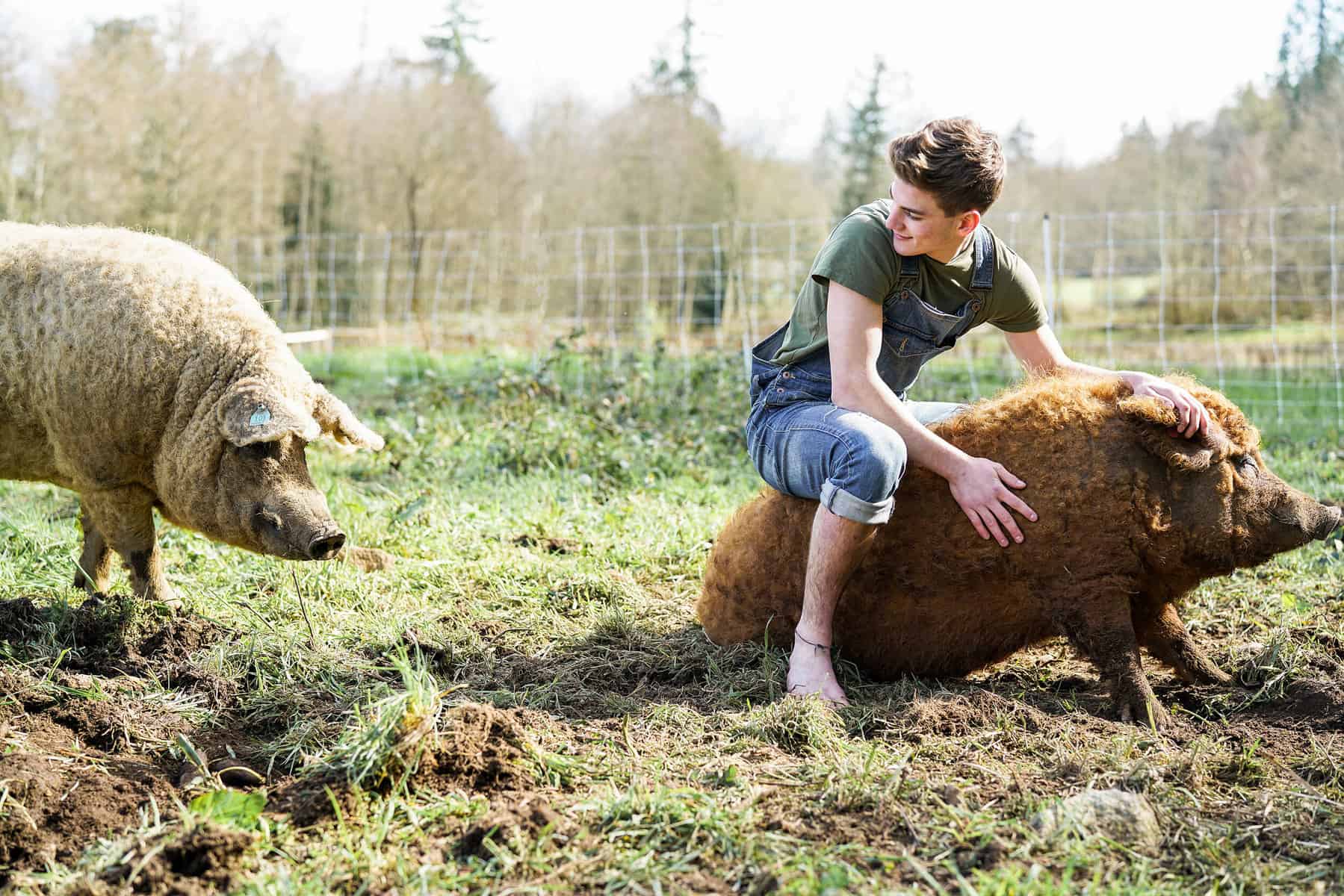
Essentially, the truth is that back in the early 90s, a team of Hungarian animal geneticists actually saw that they had the last remaining Mangalitsa pigs in the world and they decided to do something about it.
So, they gathered all the remaining Mangalitsa pigs, a whole 198 of them to be exact, and they began working on a new program specifically dedicated to them and their survival. They wanted to keep this breed alive, and they needed all the help they could get.
So, they started raising the pigs in a pastureland as opposed to where most other pigs were grown in. On top of that, they started really devoting their lives to these pigs, hoping that eventually the people would realize what they were missing out on and the demand would grow again.
Fast forward 20 years later and step two of the program was finally in act, and this step went by “Eat them to save them”. As they started commercializing the pigs again, the people finally gave in and they started eating the Mangalitsa pigs again.
As people had grown accustomed to ordinary pig meat, Mangalitsa meat actually became known as a rare delicacy, driving both the demand and the price up a notch. More and more people started consuming Mangalitsa meat and it wasn’t long before they started being known across the globe again as the best pig meat you can get.
Nowadays we have well over 50,000 Mangalitsa pigs grown and butchered every single year. This just comes to show that sometimes, in order to save a species, you need to show the people just how good the species can be.
It took almost three decades, but nowadays the Mangalitsa pigs are all across the globe, with Hungary still being the focal point from where the markets from all around the world are getting their supply.
What’s the Difference?
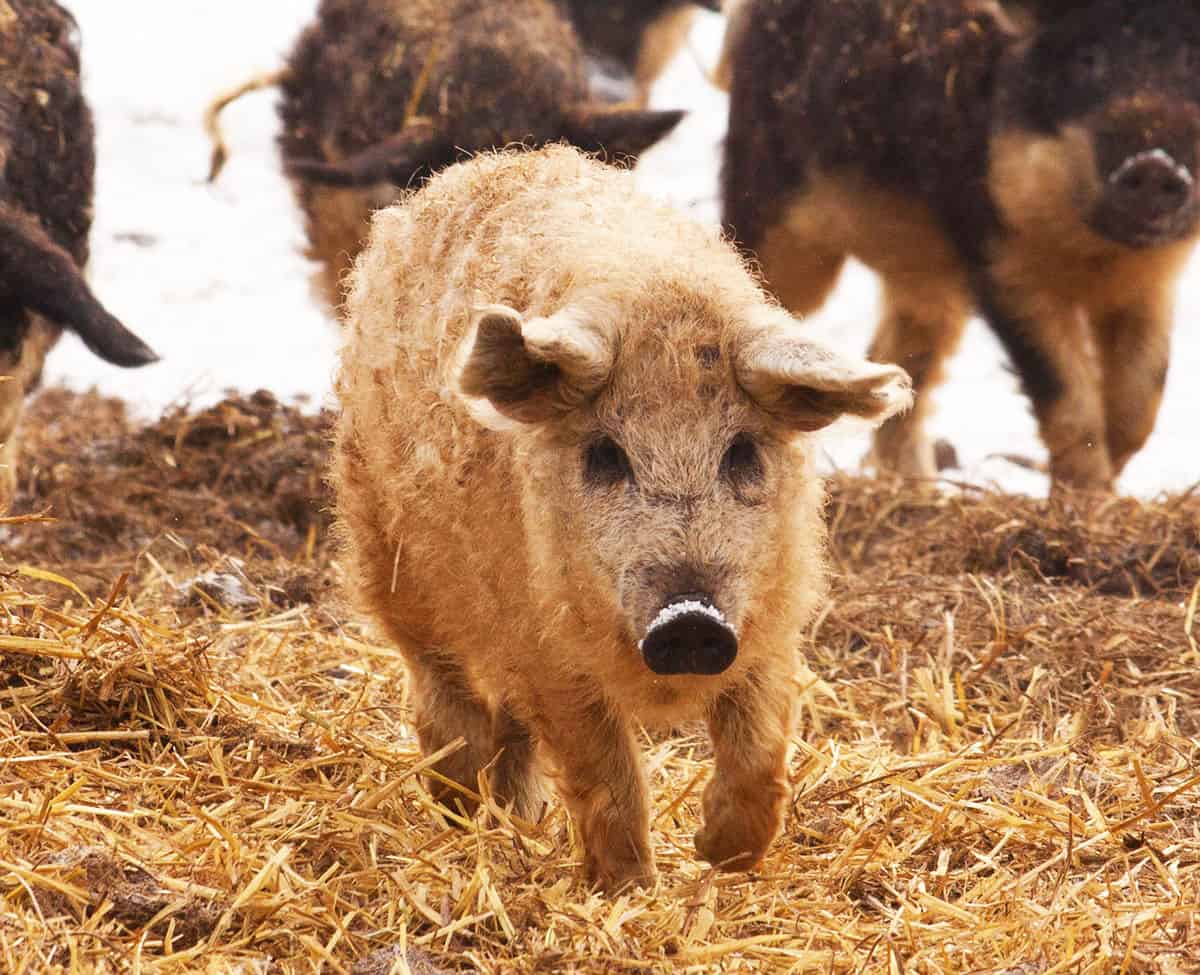
Well, in case you didn’t know, one of the main reasons as to why the Mangalitsa pig meat is so popular is its exquisite flavor. Although many have tried to ignore it in the past, the truth is that the Mangalitsa pig meat is one of a kind, as it is by far the fattiest of pig meats in the world.
As mentioned previously, Mangalitsa pig meat has around 65 to 70 percent lard, which makes it incredibly juicy and tasty.
Most of the pigs that have been bred within the last 50 years have been specifically grown to have no fat on them, only lean meat. This is why when they were first introduced in the market, they bore the title of “The other white meat”.
The only problem that came with this is the fact that the more fat you remove from the meat, the more flavor you lose overall. You might have realized this if you grew up in the 80s, but meat used to taste a lot meatier in the past, it used to taste like actual food back then unlike today.
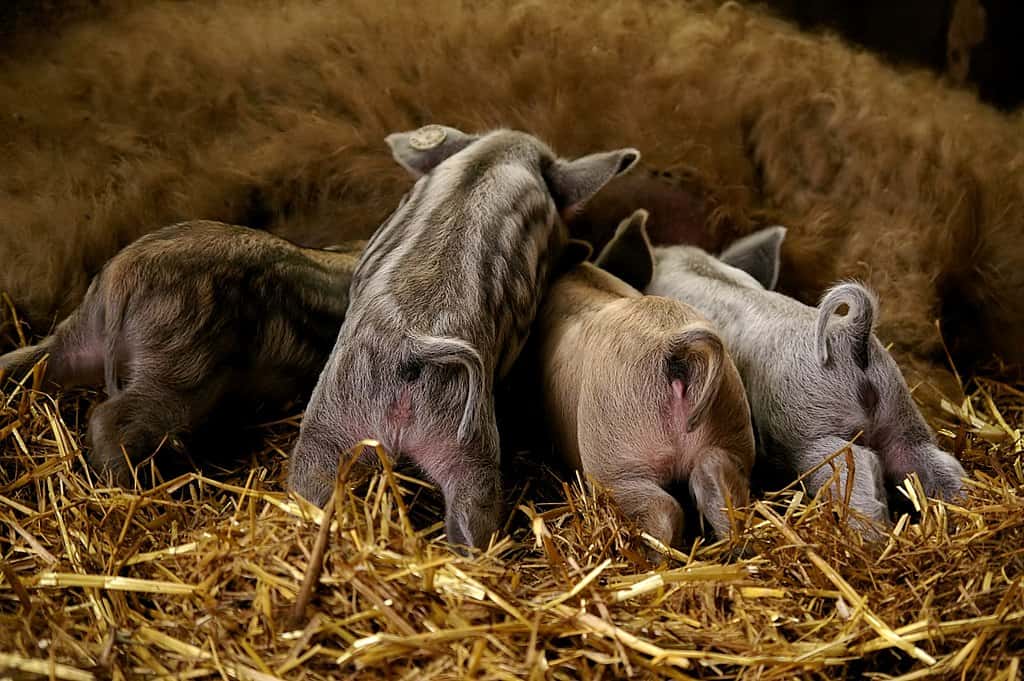
This is because meat has been genetically altered to be as low on fat as possible, rendering it tasteless for the people that have actually tasted real meat in the past.
On top of all of that, pigs are treated extremely cruelly in factory-type environments, which really leads to them not being anywhere near as tasty as they could be. They live their lives a lot tenser and this reflects on the meat’s texture and overall taste.
As opposed to this, the Mangalitsa pigs are actually grown in free-range, in the outdoors, so they get to experience life at their fullest. So, when they are butchered, this reflects on the taste and the texture, and couple that with the fact that the meat itself is a lot fatter and thus better, and you have yourself a recipe for one of the best meats you can get on the market.
Feeding Mangalitsa Pigs
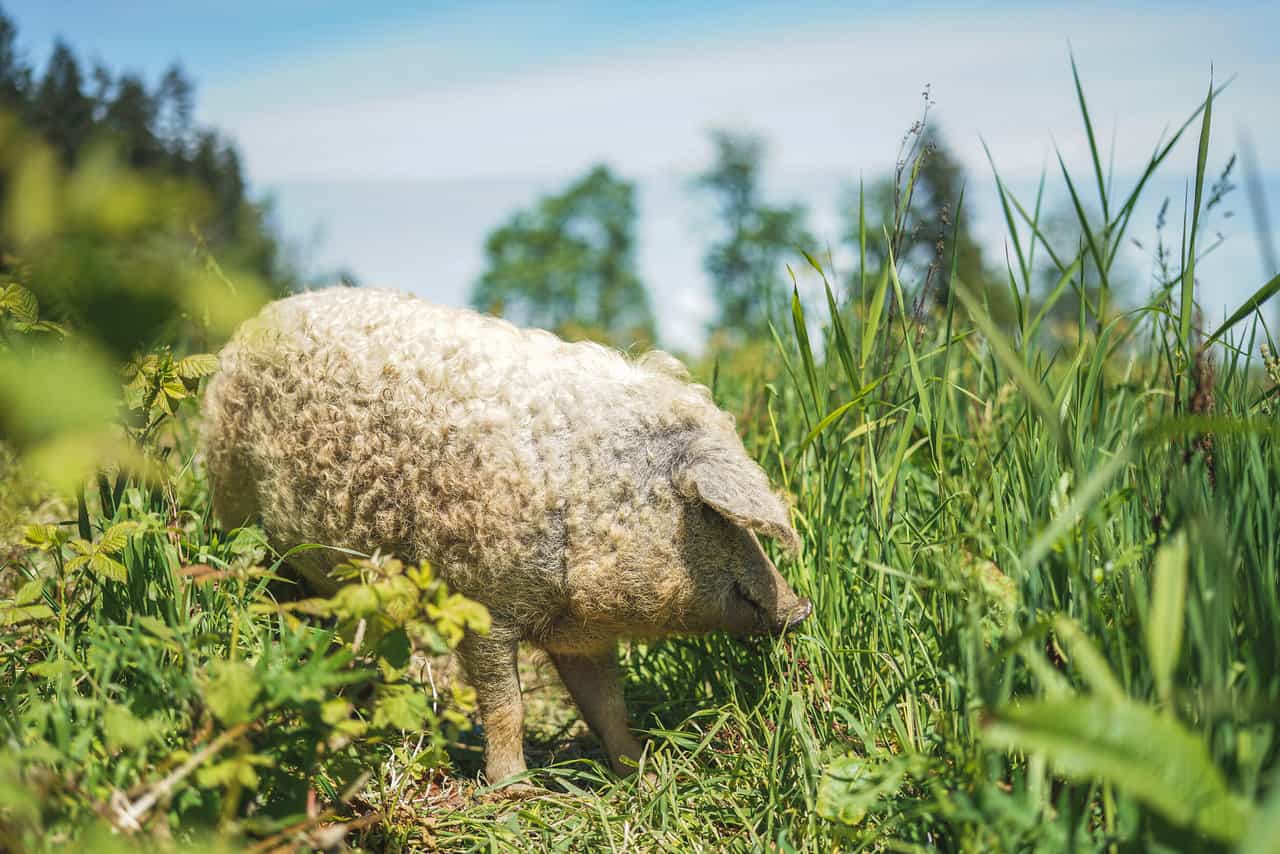
A great part about investing in Mangalitsa pigs is the fact that they are the type of animal that literally consumes all that comes into contact with it. This means that they can easily eat black walnuts, chestnuts, horse chestnuts and even acorns for that matter. They will eat almost anything and they will do so happily.
The truth is that feeding pigs corn and soybean can really mess up their digestion and it again reflects on their meat as well. So, if you don’t want tainted white meat, then don’t feed your pigs corn or soybean, you are only ruining their bodies in doing so.
On top of that, Mangalitsa pigs are also different in that they look like sheep for the most part because of their coarse hair. That’s why they’re also called “sheepish pigs“. And many people have even stated that they look more like pets than produce, especially the red-haired variant of the breed.
If that weren’t enough, many people have even started to adopt Mangalitsa pigs as pets because they can be extremely friendly and loyal, like dogs are. They can be quite an expensive investment, but they are also extremely smart and they can become really good pets if you’re willing to put the money and time into them.
What You Need to Grow Them
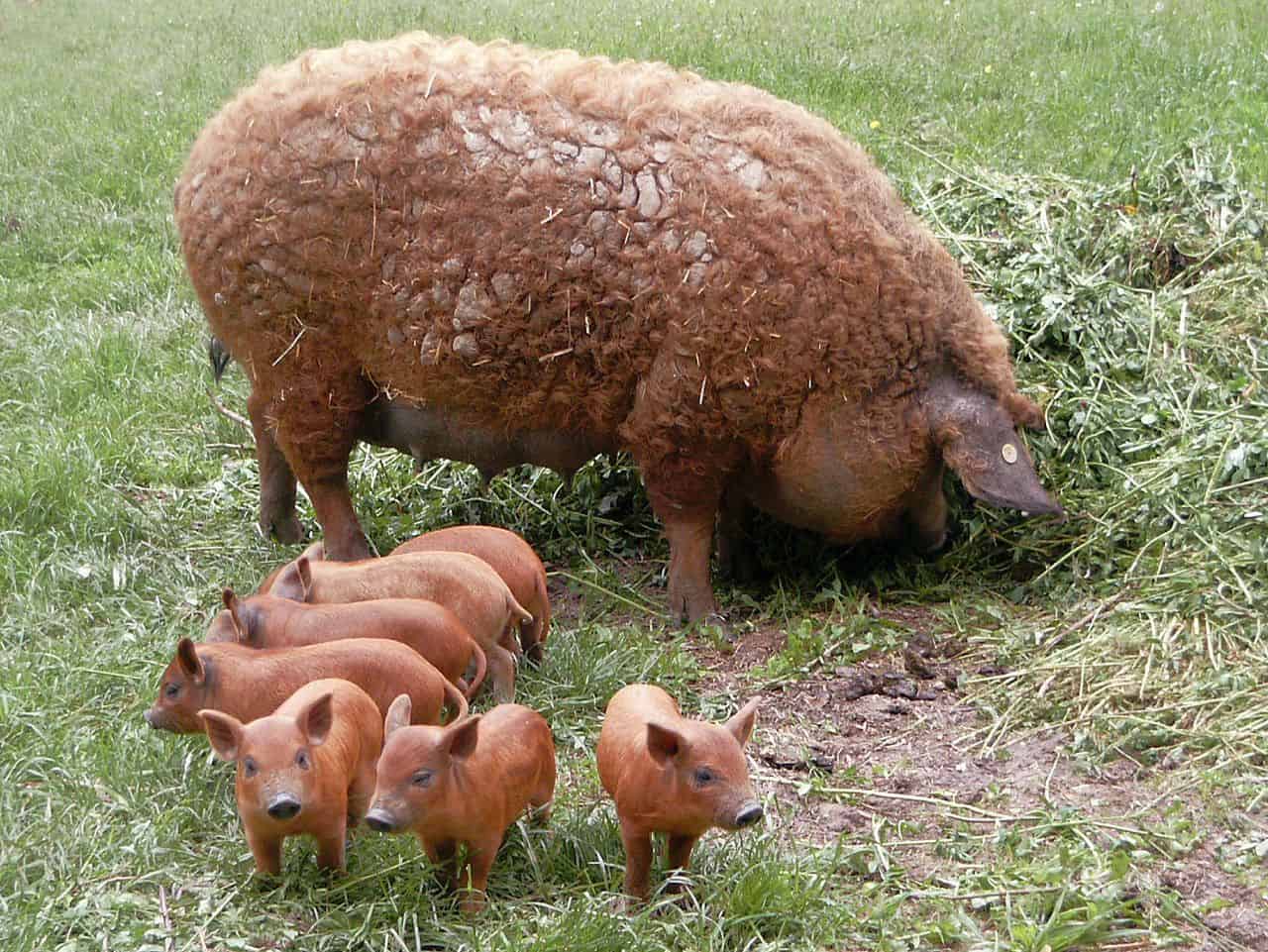
When it comes to raising your very own Mangalitsa pig you actually need a lot less than you’d think. For the most part all that you need is a decently sized land that’s safekept by an electric fence to make sure your pigs don’t run off into the wild.
When the winter comes you can build them a little shelter if you want, but the truth is that they don’t usually stay inside all that much, even when the temperature is freezing. Since their fur is so thick it keeps them warm even when it seems as though a hundred coats wouldn’t be enough to warm you up outside.
They live off of the ground, and they don’t actually need a lot more than just a decently sized pasture to consume to their heart’s content.
For the most part you can start your farm up with only two or three of them, and you can make quite a profit by the end of it all if you’ve successfully grown them to maturity. Since they can easily give birth to around 5 to 7 piglets per litter, you can easily grow from two pigs to two dozen within the first couple of years.
When to Butcher Them
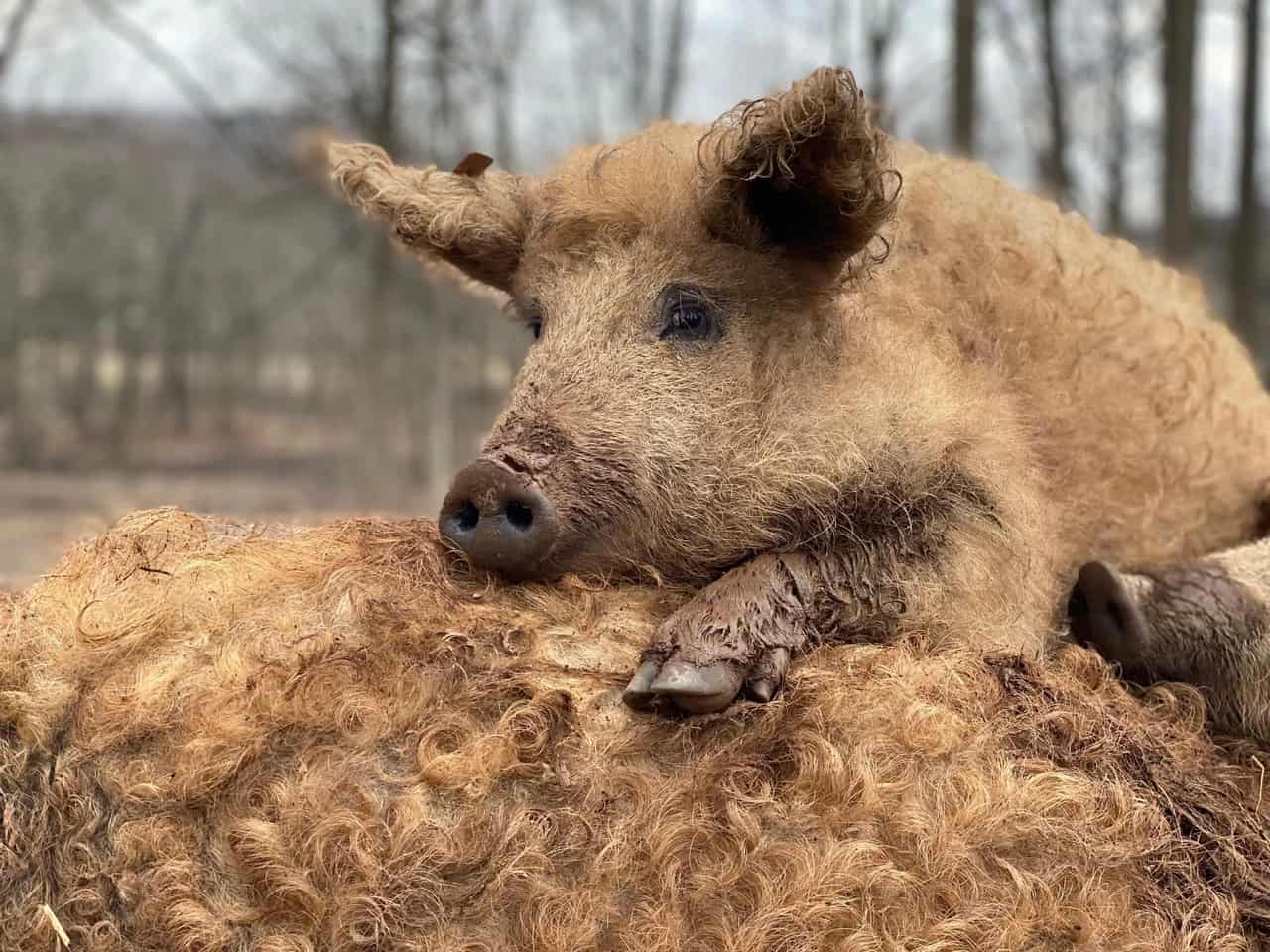
There is no exact time that they are best for butchering, as is the case with most animals out there, but you can usually start prepping up your sharpest knife by the time they get to be 15 months old or so.
That’s when they usually reach adulthood and they end up weighing in around 280 to 300 pounds in total. It is not recommended that you let them grow older than 20 months, since by that time their meat tends to drop in quality and the blend between meat and fat on them tends to change up a bit.
When they’re young they run around a lot, but as they grow older, they become more immobile which really takes its toll on the meat. Again, it’s all up to you so don’t expect any exact answers when it comes to this question. Observe your pig and if they seem fit for the butchering bring them over and do it or take them to a butcher to have them do it. If not then wait up a month or two.
Best Uses of Mangalitsa Meat
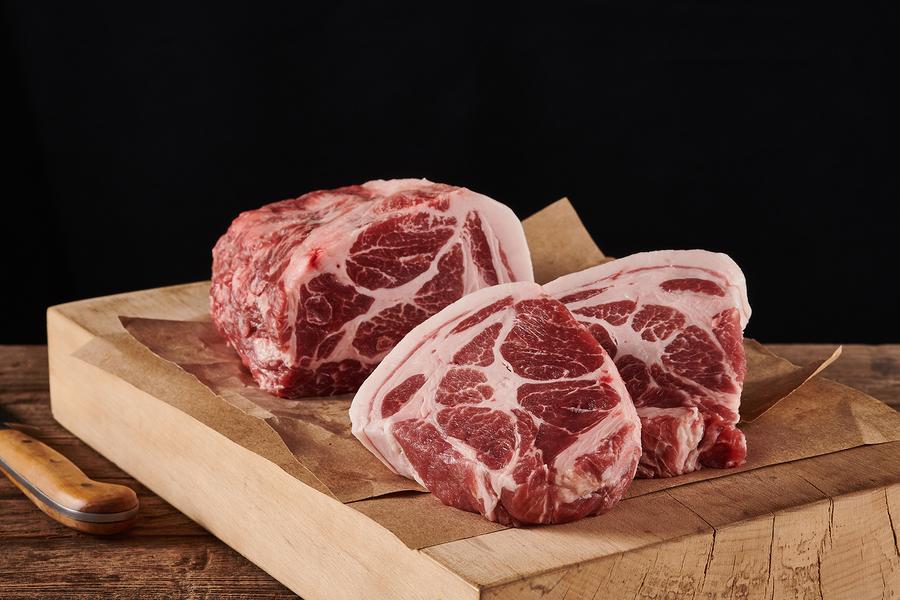
Since it is a late maturing pig breed that is known for its fatty meat, you shouldn’t be surprised that for the most part they are used for dry-fermented sausages such as Kulen and the Sremska sausage.
As mentioned previously, their meat is usually only sold at exquisite restaurants, which means that although buying the meat itself may be quite expensive, actually selling your own homegrown Mangalitsa pork meat is also going to lead to a decently sized profit as well.
There are various ways to prepare and cook it, but for the most part you can use it the same way you would any other meat out there. The difference isn’t in the way you cook it, it’s mostly in the taste and the quality of the meat.
So, if you do happen to come across Mangalitsa meat or if you have grown your own meat and you want to see how you could cook it to enhance its taste, don’t worry, regardless of how you cook it, it will always be superior to ordinary pig meat.
Conclusion
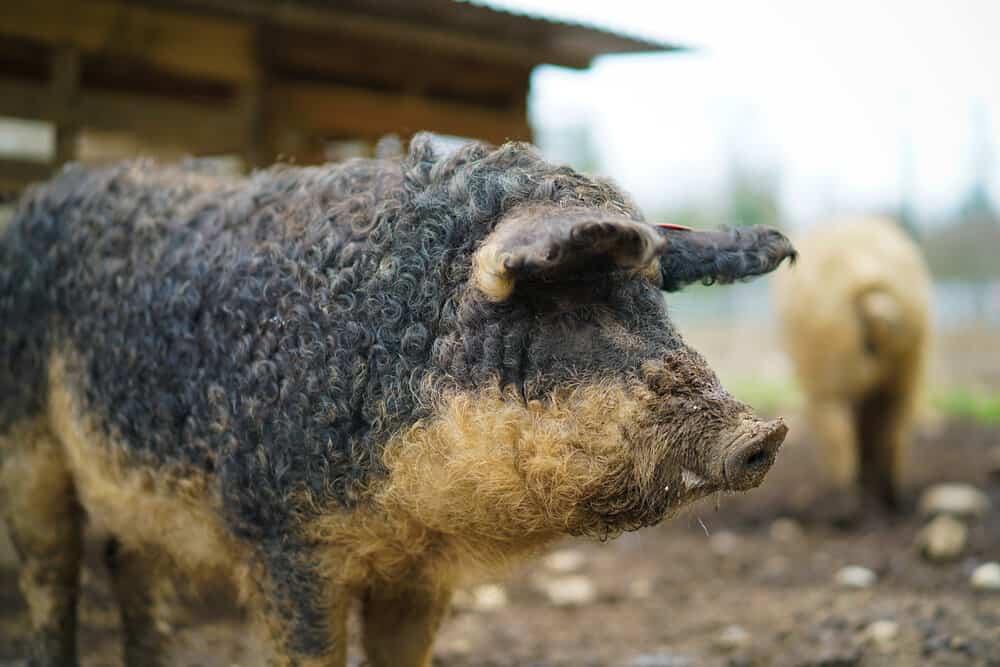
At the end of the day, many would argue that this is just an overpriced variant of pig meat and you can’t blame them for it. From an outsider’s perspective, adding in more fat to the product really doesn’t sound all that great on the long run.
But to the ones that actually have tasted it, the difference from pork is rather stupendous to say the least. There are plenty of reasons to switch over to a Mangalitsa pig barbeque over a typical pig barbeque, but don’t let us change your mind.
See for yourself whether the price is really worth it or not. Remember, depending on the restaurant or the butcher shop, the price of the Mangalitsa meat can actually be more than double of your standard pig meat. If you find that the difference is worth it, invest some more in it, maybe grow your own. If not, stick to the basics and continue eating whichever pig meat you find most enticing to you.

